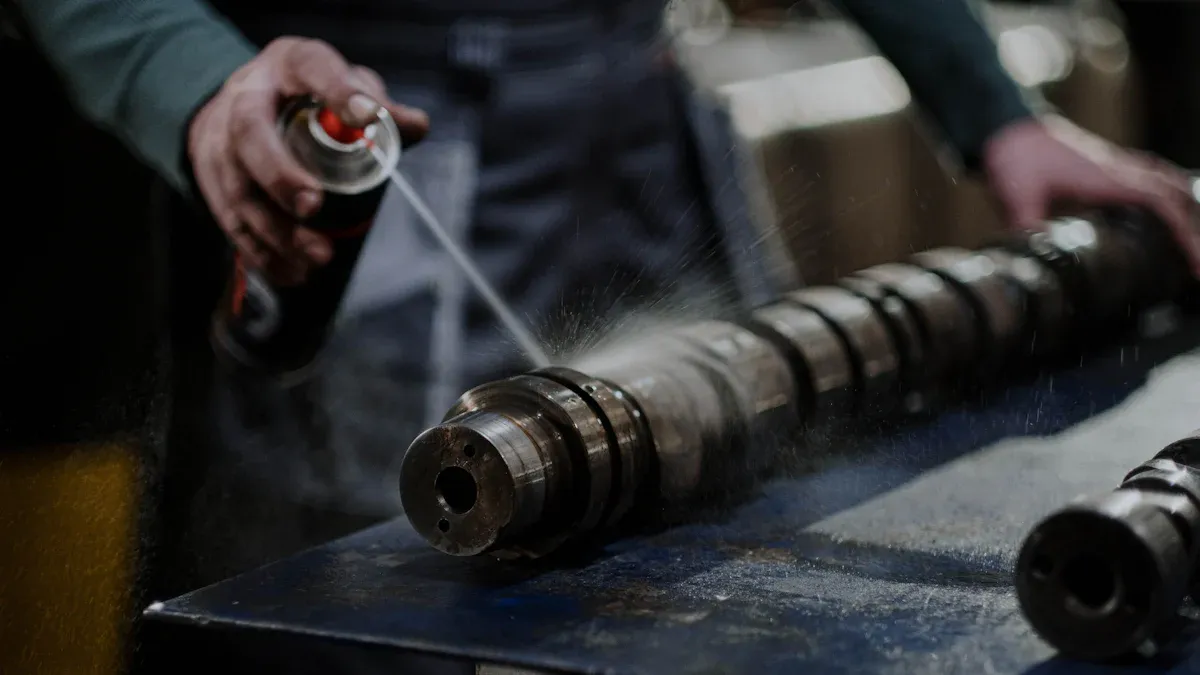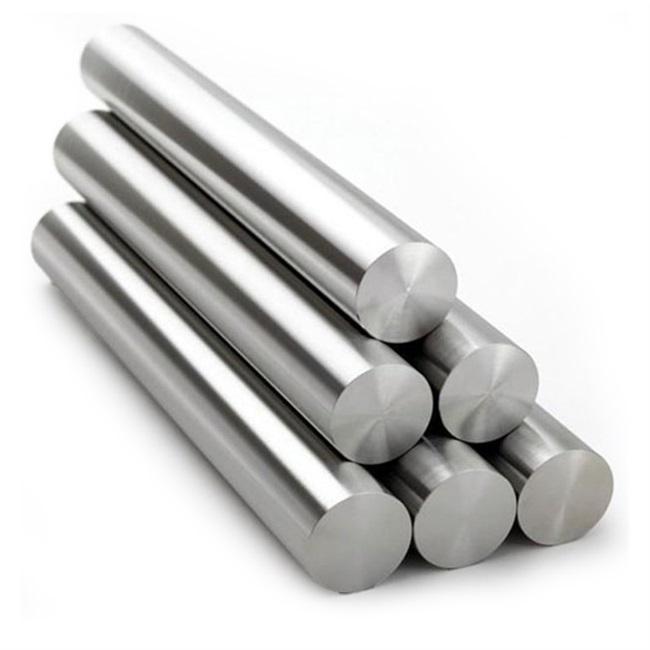
Stainless steel investment casting creates components with unmatched precision and durability. This process excels in producing intricate designs like SS304 casting parts or SS316/SS316L casting parts. Its advantages include corrosion resistance, heat tolerance, and superior surface finishes. Manufacturers also benefit from reduced material waste and cost efficiency, making it a preferred choice for complex designs.
What Is Stainless Steel Investment Casting?
Definition and Purpose
Stainless steel investment casting is a manufacturing process that creates precise and durable components. It begins with a wax pattern, which is coated in ceramic to form a mold. Once the wax is removed, molten stainless steel is poured into the mold to create the final product. This method is known for its ability to produce intricate shapes with excellent surface finishes.
The primary purpose of stainless steel investment casting is to meet the demand for high-quality, complex parts in modern industries. It minimizes material waste and reduces the need for post-machining. This process is especially valued for its precision and reliability. Industries like aerospace, medical, food processing, and automotive rely on it to produce components that must meet strict standards.
Common Applications
Stainless steel investment casting is used across a wide range of industries due to its versatility. Here are some of the most common sectors that benefit from this process:
- Aerospace
- Medical
- Automotive
- Food Processing
- Renewable Energy
Specific products made using this method include turbine blades, valve bodies, pump impellers, and surgical tools. For example, 17-4 stainless steel is used to create cargo system components for aerospace applications, while 316 stainless steel is ideal for electrical components. This process also produces items like coffee machine parts, dental tools, and even jewelry. Its ability to handle complex geometries makes it a go-to choice for manufacturers worldwide.
Step-by-Step Process of Stainless Steel Investment Casting

Wax Pattern Creation
Creating the wax pattern is the first and most crucial step in stainless steel investment casting. This process involves several stages:
- Create the Wax Pattern: Manufacturers either assemble preformed wax shapes or carve the pattern from a solid wax block.
- Mount the Wax Patterns: The wax patterns are attached to a feeder structure, known as a sprue, and secured to a casting board.
- Make a Mold Shell: The entire assembly is coated with a ceramic slurry and then sprinkled with fine stucco particles for added strength.
- Remove the Wax: The wax is melted out by heating the mold, leaving behind a hollow cavity.
- Melt and Cast the Metal: Molten stainless steel is poured into the cavity to form the final product.
- Finalize the Castings: The ceramic shell is broken away, and the castings are cleaned to reveal the finished component.
This step ensures that the final product mirrors the original design with high precision.
Ceramic Shell Formation
The ceramic shell is formed by repeatedly dipping the wax pattern into a slurry made of fine ceramic particles and binders. After each dip, the pattern is coated with stucco and left to dry. This process is repeated until the shell reaches the desired thickness. Once hardened, the wax is melted and removed, leaving a hollow ceramic mold. This shell captures every intricate detail of the wax pattern, ensuring the stainless steel investment casting process produces precise and durable components.
Dewaxing and Mold Preparation
Removing the wax, or dewaxing, is a delicate process. A modern technique applies energy to a small horizontal band around the ceramic shell, allowing the wax to melt and flow out gradually. This method reduces stress on the shell and prevents cracks. After dewaxing, the mold undergoes preparation to ensure high-quality casting. Techniques like gravity pouring or vacuum-assisted casting are chosen based on the product’s requirements. Controlling the solidification rate and cooling temperature is also critical to avoid defects.
Stainless Steel Pouring
Pouring molten stainless steel into the prepared mold is a pivotal step. The metal must be heated to the correct temperature to ensure proper flow and avoid defects. Adjusting the pouring temperature and rate helps maintain the mold’s integrity and ensures the molten metal fills every cavity. This step requires precision to achieve the desired quality and strength.
Cooling and Solidification
As the molten stainless steel cools, it solidifies into the shape of the mold. However, this stage can introduce defects like shrinkage or porosity if not carefully managed. Proper venting, controlled cooling rates, and high-quality molds help prevent these issues. Uniform cooling ensures the final product retains its strength and dimensional accuracy.
Finishing and Inspection
Once the casting cools, the ceramic shell is removed, and the component undergoes finishing. Techniques like sandblasting, mechanical polishing, and electropolishing refine the surface and enhance properties like corrosion resistance. Finally, the casting is inspected using methods like X-ray or ultrasound to ensure it meets quality standards. These steps guarantee that stainless steel investment casting produces reliable and precise components.
Materials and Techniques in Stainless Steel Investment Casting

Stainless Steel Alloys Used
The choice of stainless steel alloy plays a big role in the success of investment casting. Each alloy offers unique properties that suit specific applications. For example, 304 stainless steel, also called 18/8 steel, is the most popular choice. It resists corrosion and scaling, even at high temperatures, making it ideal for safety-critical parts. Other commonly used alloys include 316, 304L, 316L, 410, and 416. These alloys provide a mix of strength, corrosion resistance, and versatility.
| Grades | Features | Applications |
|---|---|---|
| 304 | Food-grade alloy with excellent corrosion resistance. | Medical, food, and chemical industries. |
| 316 | Superior corrosion resistance, especially in marine environments. | Marine hardware, firefighting equipment. |
| 304L / 316L | Lower carbon content for better weldability. | Plumbing, medical tools. |
| 410 & 416 | High strength but lower corrosion resistance. | Auto parts, knives, tools. |
Precision Techniques
Precision is the heart of stainless steel investment casting. The process starts with a wax model that captures every detail of the final product. This model is coated with a ceramic shell, which preserves the intricate design during casting. Modern techniques like computer-aided design (CAD) take this precision to the next level. CAD allows manufacturers to create highly accurate designs with minimal imperfections. This approach ensures that even the most complex components meet strict quality standards.
Some advancements have further improved precision. Additive manufacturing, or 3D printing, enables the creation of complex designs faster and with greater accuracy. Automation and robotics also play a role, enhancing both quality and safety during production.
Advanced Casting Equipment
Advanced equipment has revolutionized stainless steel investment casting. Automation and artificial intelligence (AI) now streamline the process. Robots can detect flaws earlier than humans, reducing waste and improving efficiency. AI-driven systems analyze data in real time, identifying defects and ensuring consistent quality. Predictive maintenance tools also help minimize downtime, keeping production lines running smoothly. These innovations not only improve the quality of castings but also make the process more cost-effective and environmentally friendly.
Benefits of Stainless Steel Investment Casting
Durability and Strength
Stainless steel investment casting stands out for its exceptional durability and strength. This process uses stainless steel, a material known for its excellent mechanical properties and high corrosion resistance. These qualities make it ideal for components exposed to harsh environments, such as marine or industrial settings.
- Why is it so durable?
- Stainless steel resists wear and tear, even under extreme conditions.
- The casting process ensures components are both intricate and robust.
- It minimizes waste and reduces the need for additional machining, which enhances cost efficiency.
To ensure strength, manufacturers conduct rigorous tests. For example:
| Test Type | Purpose |
|---|---|
| Hardness Testing | Measures resistance to deformation using methods like Brinell or Rockwell. |
| Tensile Testing | Evaluates the material’s ability to withstand pulling forces. |
These tests confirm that stainless steel investment casting produces components that last longer and perform reliably.
Precision for Complex Designs
When it comes to creating intricate and detailed components, stainless steel investment casting is unmatched. This method allows manufacturers to produce parts with tight tolerances and excellent surface finishes. It’s perfect for industries like aerospace and medical, where precision is critical.
How does it achieve such accuracy?
- The process starts with a detailed wax pattern that captures every design element.
- The ceramic mold preserves these details during casting.
- Advanced techniques like computer-aided design (CAD) and 3D printing enhance precision further.
This level of detail makes it possible to create complex shapes that other methods can’t replicate. For example, turbine blades for aircraft engines or surgical tools for medical procedures often rely on this process.
Versatility Across Industries
Stainless steel investment casting is incredibly versatile, serving a wide range of industries. Its ability to produce components with unique shapes and properties makes it a go-to choice for many applications.
Industries that benefit include:
- Aerospace: Lightweight yet durable parts like turbine blades.
- Medical: Hygienic surgical instruments and implants.
- Automotive: Precision engine parts and exhaust systems.
- Food Processing: Corrosion-resistant valves and pumps.
Other sectors, such as mining, agriculture, and renewable energy, also rely on this process for components like gears, housings, and marine equipment. This versatility highlights why stainless steel investment casting remains a preferred manufacturing method worldwide.
Stainless steel investment casting plays a key role in modern manufacturing. It delivers precision, durability, and versatility, making it essential for industries like aerospace, medical, and automotive. Its ability to create intricate designs with high-quality materials ensures reliable performance. This process continues to shape the future of advanced manufacturing.
FAQ
What makes stainless steel investment casting better than other methods?
Stainless steel investment casting offers unmatched precision and durability. It creates complex shapes with minimal waste, making it ideal for industries needing high-quality, intricate components. 🛠️
Can stainless steel investment casting handle large-scale production?
Yes! This process is perfect for both small and large production runs. Manufacturers can replicate designs consistently, ensuring quality and efficiency for bulk orders. 📦
How does stainless steel investment casting reduce material waste?
The process uses wax patterns and precise molds, minimizing excess material. This efficiency lowers costs and supports sustainable manufacturing practices. 🌍
